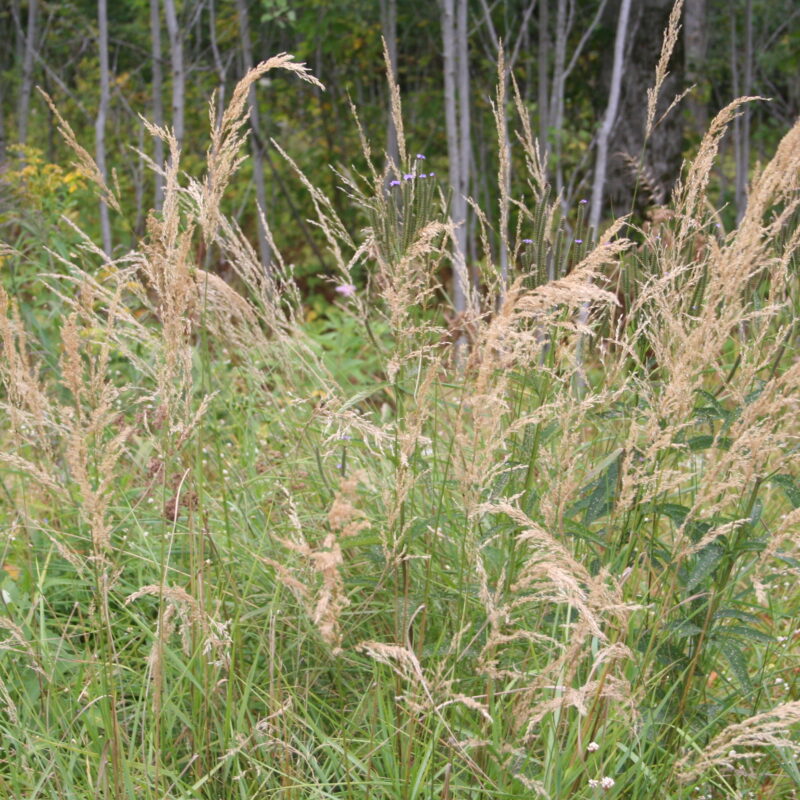Blue-joint GrassCalamagrostis canadensis
a.k.a. Canada Bluejoint
Cool-season, perennial grass with a mature height of 2-4'. It has many very slender stems that arise from small rhizomes. Canada blue-joint is used in upper shoreline zones and in vegetated swales. This species also does well in landscaping, restorations (especially wetland, wet meadow and wet prairie), and mitigation sites. It provides good wildlife habitat for songbirds.
USDA symbol: CACA4
General Information
| Plant Type | Grass |
|---|---|
| Height | 4 feet |
| Light Exposure | Sun |
| Soil Moisture | Medium |
| Bloom Color | Green, Brown |

Tolerances
| Flooding / Inundation Tolerance | High |
|---|---|
| General Resilience | 8 |
| Salt Tolerance | Low |
Pollinator Value: None Known
| Bloom Months | August to September |
|---|
Project Planning
| Project Type | Boulevard, Erosion Control, Restoration, Shoreline Buffer |
|---|---|
| Coefficient of Conservatism | 6 |
| Herbivore Sensitivity | High |
| Lifespan | Perennial |
| Rate of Spread | Medium |
| Soil Stabilization | Deep |
| Vegetative Reproduction | Clonal |
Range
| County | Aitkin, Anoka, Becker, Beltrami, Benton, Blue Earth, Brown, Carlton, Carver, Cass, Chippewa, Chisago, Clay, Clearwater, Cook, Cottonwood, Crow Wing, Dakota, Dodge, Douglas, Fillmore, Freeborn, Goodhue, Hennepin, Houston, Hubbard, Isanti, Itasca, Jackson, Kandiyohi, Kittson, Koochiching, Lake, Lake of the Woods, Le Sueur, Lyon, Mahnomen, Marshall, McLeod, Meeker, Mille Lacs, Morrison, Mower, Nicollet, Nobles, Norman, Olmsted, Otter Tail, Pine, Pipestone, Polk, Pope, Ramsey, Rice, Roseau, Sherburne, Sibley, St. Louis, Stearns, Steele, Todd, Wabasha, Wadena, Washington, Wilkin, Winona, Wright, Yellow Medicine |
|---|---|
| Ecoregion | Driftless Area, Lake Agassiz Plain, North Central Hardwood Forests, Northern Glaciated Plains, Northern Lakes and Forests, Northern Minnesota Wetlands, Western Cornbelt Plains |
| Approximate Eco Province | Eastern Broadleaf Forest, Laurentian Mixed Forest, Prairie Parkland, Tallgrass Aspen Parklands |
